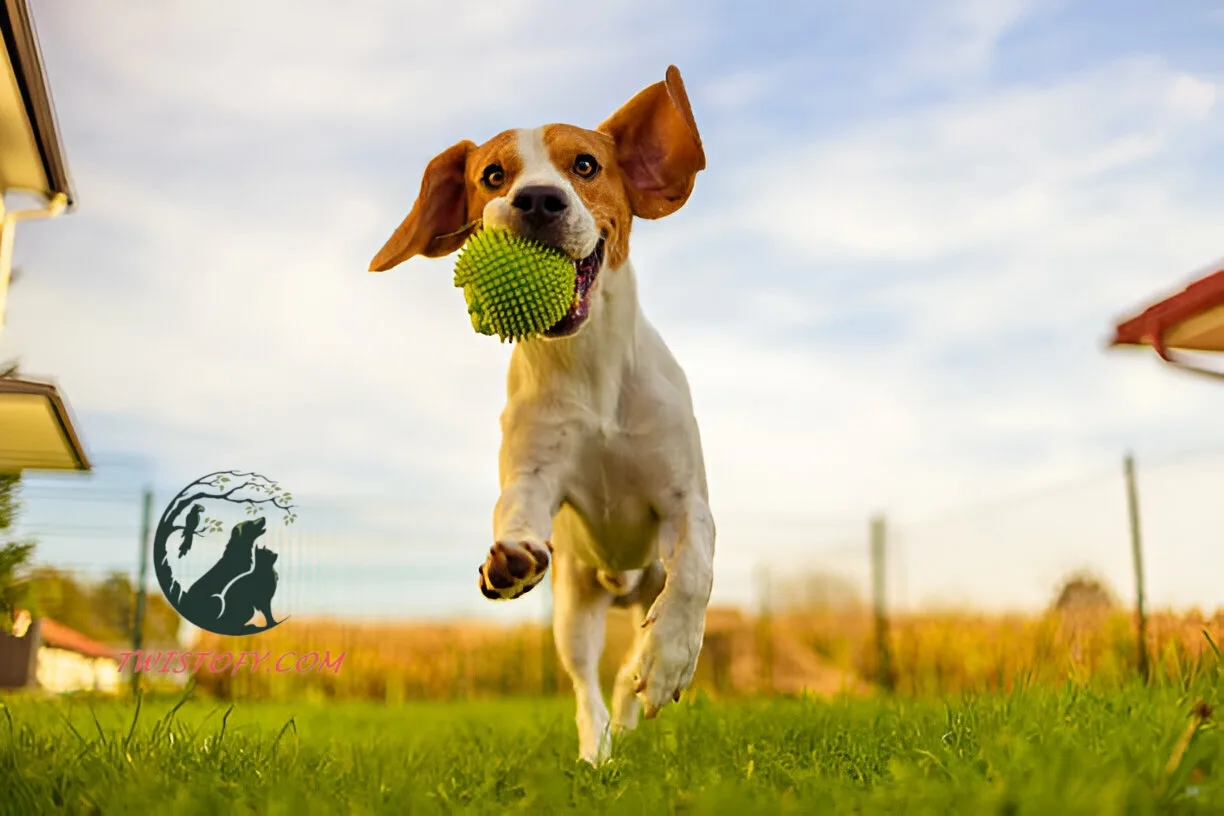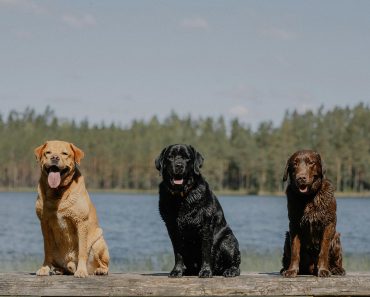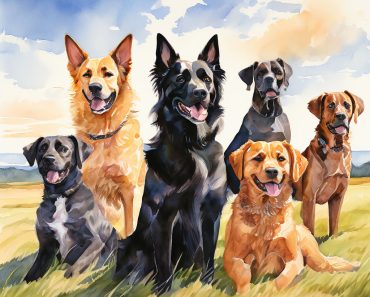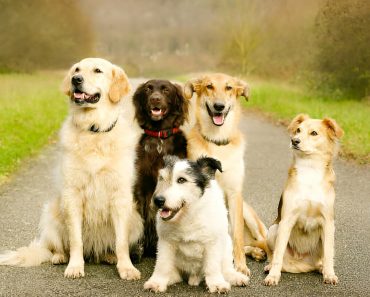 Beagle dogs, those charmingly floppy-eared, curious-eyed companions, have captured the hearts of millions worldwide. Renowned for their friendly demeanor, intelligence, and undeniable charm, these compact hounds are a popular choice for families, hunters, and dog enthusiasts alike. In this comprehensive guide, we delve deep into the world of Beagles, exploring their history, temperament, care needs, and much more. So, buckle up and get ready to embark on a journey through the wonderful world of Beagles.
Beagle dogs, those charmingly floppy-eared, curious-eyed companions, have captured the hearts of millions worldwide. Renowned for their friendly demeanor, intelligence, and undeniable charm, these compact hounds are a popular choice for families, hunters, and dog enthusiasts alike. In this comprehensive guide, we delve deep into the world of Beagles, exploring their history, temperament, care needs, and much more. So, buckle up and get ready to embark on a journey through the wonderful world of Beagles.
-
Origin and History
Beagle dogs have a rich and storied history that dates back centuries. Originally bred in England as scent hounds, Beagles were prized for their exceptional sense of smell and agility. Their ancestors can be traced back to ancient Greece, where similar hounds were used for hunting small game. Over the years, Beagles evolved into the beloved breed we know today, with their distinctive tri-color coats and endearing personalities.
-
Physical Characteristics
One of the most striking features of Beagle dogs is their adorable appearance. These compact hounds typically stand between 13 and 15 inches tall and weigh anywhere from 20 to 30 pounds. They have a sleek, muscular build, with short, dense coats that come in a variety of colors, including tri-color (black, white, and tan) and lemon (light brown and white). Beagle dogs also boast expressive brown eyes and long, droopy ears that give them an irresistibly cute look.
-
Temperament and Behavior
Beagle dogs are renowned for their friendly and outgoing nature. They are sociable dogs that thrive on human companionship and make excellent family pets. Beagles are also highly intelligent and curious by nature, which can sometimes lead to mischief if left unsupervised. However, with proper training and socialization, they can be well-behaved and obedient companions. It’s important to note that Beagle dogs are also highly energetic dogs that require plenty of exercise and mental stimulation to prevent boredom and destructive behavior.
-
Training and Obedience
While they are intelligent dogs, Beagle dogs have a strong independent streak and may be prone to stubbornness. Consistency, patience, and positive reinforcement are key when it comes to training these spirited hounds. Using rewards such as treats and praise can help motivate Beagles to learn new commands and behaviors. It’s also essential to start training early and to be firm but gentle in your approach.
-
Exercise and Activity Needs
Beagles are active and energetic dogs that require plenty of exercise to stay healthy and happy. Daily walks, play sessions, and opportunities to explore their surroundings are essential for Beagles to burn off excess energy and stimulate their minds. Beagles also excel in canine sports such as agility and scent work, which provide both physical and mental stimulation. It’s important to provide Beagles with ample opportunities for exercise to prevent boredom and behavioral issues.
-
Grooming and Care
Despite their short coats, Beagles do require regular grooming to keep them looking their best. Weekly brushing helps remove loose hair and prevents matting, while occasional baths can help keep their coat clean and shiny. Beagles also require regular nail trimming, ear cleaning, and dental care to maintain their overall health and well-being. Additionally, Beagles are notorious for their love of food and may be prone to obesity if their diet is not carefully monitored. A balanced diet consisting of high-quality dog food and regular exercise is essential to keep Beagles in tip-top shape.
-
Health Considerations
Like all breeds, Beagle dogs are prone to certain health issues that prospective owners should be aware of. One common health concern in Beagles is hip dysplasia, a condition that affects the hip joints and can cause pain and mobility issues. , Beagles may be prone to ear infections due to their long, droopy ears, which can trap moisture and debris. Regular ear cleaning and inspection can help prevent infections and keep your Beagle’s ears healthy.
-
Socialization and Interaction
Socialization is crucial for Beagles to develop into well-adjusted and confident dogs. Exposing them to a variety of people, animals, and environments from a young age can help prevent shyness and fearfulness later in life. Puppy classes, obedience training, and regular outings to dog-friendly parks are excellent ways to socialize Beagles and teach them proper manners around other dogs and people. Additionally, Beagles thrive on human interaction and enjoy being part of the family. Including them in daily activities and providing plenty of affection and attention will help strengthen the bond between you and your Beagle.
-
Beagle Myths Debunked
Despite their popularity, Beagle dogs are often the subject of myths and misconceptions. While it’s true that Beagle dogs have a strong independent streak, they are also highly trainable with the right approach. Positive reinforcement techniques, such as clicker training and rewards-based methods, can be highly effective in teaching Beagles new behaviors and commands. Another myth is that Beagles are prone to excessive barking. While Beagles are vocal dogs that enjoy using their voices, proper training and socialization can help minimize excessive barking behavior.
-
Beagle Care Tips
Providing the best possible care for your Beagle involves more than just meeting their basic needs. Here are some additional tips to help ensure your Beagle’s health and happiness:
- Regular veterinary check-ups are essential for monitoring your Beagle’s overall health and detecting any potential issues early on.
- Invest in quality chew toys and puzzle feeders to keep your Beagle mentally stimulated and prevent boredom.
- Be mindful of your Beagle’s diet and avoid overfeeding or giving too many treats, as obesity can lead to serious health problems.
- Keep your Beagle’s living environment clean and free of hazards, including small objects that could be swallowed and toxic substances.
- Provide plenty of opportunities for your Beagle to engage in scent-based activities, such as hide-and-seek games or scent work training, to satisfy their natural instincts.
-
Beagle dogs as Working Dogs
While Beagle dogs are beloved as family pets, they also have a long history as working dogs. Their exceptional sense of smell and keen hunting instincts make them well-suited for a variety of jobs, including tracking and detection work. Beagles are often employed by law enforcement agencies to sniff out drugs, explosives, and other contraband. They are also used in search and rescue operations to locate missing persons and provide assistance in emergency situations. Additionally, Beagles excel in competitive dog sports such as agility and obedience trials, where their athleticism and intelligence are put to the test.
-
Beagle Famous Faces
Throughout history, Beagle dogs have captured the hearts of people from all walks of life, including some famous faces. One notable Beagle enthusiast was Charles Darwin, the renowned naturalist and author of “On the Origin of Species.” Darwin owned several Beagles and frequently referenced them in his writings on evolution and natural selection. Another famous Beagle is Snoopy, the beloved cartoon character created by Charles M. Schulz. Snoopy, with his vivid imagination and endearing personality, has become an iconic symbol of Beagle charm and wit.
-
Beagle Rescue and Adoption
Unfortunately, not all Beagle dogs are fortunate enough to have loving homes. Many Beagles end up in shelters or rescue organizations due to factors such as abandonment, neglect, or overbreeding. Adopting a Beagle from a rescue organization is a rewarding way to provide a second chance to a deserving dog in need. Rescue Beagles come in all ages, sizes, and personalities, and with a little patience and love, they can make wonderful companions. Additionally, spaying and neutering your Beagle and supporting responsible breeding practices can help reduce the number of Beagles in need of rescue.
-
Beagle Advocacy and Awareness
Advocating for Beagle dogs and raising awareness about their needs and welfare is essential for ensuring their continued well-being. Supporting organizations dedicated to Beagle rescue, education, and advocacy is one way to make a positive impact. These organizations work tirelessly to rescue Beagles from neglectful situations, provide them with necessary medical care and rehabilitation, and ultimately find them loving forever homes. By volunteering your time, donating resources, or simply spreading the word about Beagle rescue efforts, you can help make a difference in the lives of these remarkable dogs.
-
Beagle Breeding and Genetics
Understanding the intricacies of Beagle breeding and genetics is crucial for both breeders and prospective owners. Beagle dogs are a relatively healthy breed overall, but like all breeds, they can be prone to certain genetic conditions. Responsible breeders strive to produce healthy puppies by conducting health screenings and genetic testing on their breeding stock to identify and minimize the risk of hereditary diseases. It’s also important for prospective owners to research reputable breeders who prioritize the health and well-being of their dogs and adhere to ethical breeding practices.
-
Beagle Adaptability and Versatility

One of the remarkable qualities of Beagle dogs is their adaptability and versatility. While they were originally bred as hunting dogs, Beagle dogs have successfully transitioned into various roles and environments, including family pets, therapy dogs, and even service animals. Their friendly demeanor, intelligence, and trainability make them well-suited for a wide range of activities and lifestyles. Whether they’re snuggling up on the couch with their favorite humans or embarking on outdoor adventures, Beagles are always eager to join in on the fun.
-
Beagle Nutrition and Diet
Providing your Beagle with a balanced and nutritious diet is essential for their overall health and well-being. As active and energetic dogs, Beagle dogs require a diet that provides them with the necessary nutrients to support their energy levels and maintain a healthy weight. High-quality dog food formulated specifically for small to medium-sized breeds is recommended for Beagle dogs, with a focus on lean protein sources, whole grains, and healthy fats. It’s important to avoid overfeeding and monitor your Beagle’s calorie intake to prevent obesity, which can lead to a host of health problems.
-
Beagle Lifespan and Longevity
On average, Beagle dogs have a lifespan of 12 to 15 years, although individual longevity can vary depending on factors such as genetics, diet, exercise, and overall health care. Providing your Beagle with regular veterinary check-ups, preventive care, and a healthy lifestyle can help maximize their lifespan and ensure they live a long and fulfilling life. Additionally, early detection and treatment of any health issues that may arise can help prolong your Beagle’s quality of life and keep them happy and healthy for years to come.
-
Beagle Community and Support
Being part of the Beagle community is a rewarding experience for owners and enthusiasts alike. Whether you’re connecting with fellow Beagle lovers at dog parks, breed meet-ups, or online forums and social media groups, there’s a sense of camaraderie and support among Beagle enthusiasts that is truly special. Sharing stories, tips, and advice with other Beagle owners can be invaluable for navigating the joys and challenges of Beagle ownership and fostering lifelong friendships along the way.
-
Beagle Exercise and Mental Stimulation
In addition to physical exercise, Beagle dogs also require mental stimulation to keep their minds sharp and engaged. Engaging in activities such as puzzle toys, interactive games, and training sessions can help satisfy their innate curiosity and prevent boredom. Beagle dogs thrive on challenges and enjoy learning new skills, so incorporating mental enrichment activities into their daily routine is essential for their overall well-being. Whether it’s mastering a new trick or solving a complex puzzle, Beagle dogs love the opportunity to use their brains and showcase their intelligence.
-
Beagle Vocalizations and Communication
Beagle dogsare known for their distinctive vocalizations, including baying, barking, and howling. These vocalizations are deeply ingrained in their hunting heritage and serve as a means of communication with their pack members.
While Beagle owners may find their vocalizations charming and endearing, it’s important to understand that excessive barking or howling can be a sign of boredom, anxiety, or distress. Providing plenty of mental and physical stimulation, along with positive reinforcement training, can help minimize unwanted vocalizations and promote more desirable behaviors.
-
Beagle Scenting Abilities
One of the most remarkable traits of Beagle dogs is their exceptional sense of smell, which is considered one of the most acute among dog breeds. Beagle dogs have been bred for centuries for their scenting abilities, making them highly proficient in tracking and detecting various scents.
Their keen sense of smell allows them to excel in activities such as search and rescue, detection work, and even competitive scent trials. Harnessing their natural scenting abilities through activities such as scent work training can provide Beagle dogs with both mental stimulation and a sense of purpose.
-
Beagle Popularity and Trends
Beagle dogs have consistently ranked among the most popular dog breeds in the United States and around the world for decades. Their friendly disposition, adorable appearance, and versatile nature make them a favorite choice for families, singles, and dog enthusiasts alike.
Beagle dogs have also enjoyed a surge in popularity in recent years thanks to their widespread presence in popular culture, including movies, television shows, and advertising campaigns. While their popularity may ebb and flow with changing trends, one thing remains constant – the timeless appeal of the Beagle.
-
Beagle Adaptations and Varieties
While the classic tri-color Beagle is perhaps the most well-known, there are several other variations and adaptations of the breed. Varieties such as the lemon Beagle, which features a lighter, more yellowish coat, and the blue Beagle, which has a striking bluish-gray hue, add diversity to the Beagle gene pool.
Additionally, there are variations in size within the breed, with some Beagle dogs being smaller or larger than the standard size range. Each variation of the Beagle brings its own unique charm and personality traits, further enriching the diversity of this beloved breed.
-
Beagle Resilience and Spirit
Despite their small size, Beagle dogs possess a remarkable resilience and spirit that endears them to people of all ages. Whether they’re navigating rugged terrain on a hunting expedition or snuggled up on the couch with their favorite humans, Beagle dogs approach life with a boundless enthusiasm and zest for adventure. Their unwavering optimism and indomitable spirit serve as a reminder of the power of resilience and the joy of living life to the fullest.
In a world filled with uncertainty, Beagle dogs are a source of inspiration and comfort, reminding us to embrace each day with courage, curiosity, and a wagging tail.
-
Beagle dogs Legacy and Impact
The legacy of the Beagle extends far beyond their role as beloved pets and companions. Throughout history, Beagle dogs have made significant contributions to society through their work as hunting dogs, service animals, and therapy dogs. Their keen sense of smell and unwavering dedication have saved lives, brought comfort to those in need, and provided companionship to countless individuals around the world.
Whether they’re sniffing out contraband at airports, comforting patients in hospitals, or simply bringing joy to their families at home, Beagle dogs leave an indelible mark on the hearts of all who have the privilege of knowing them.
-
Beagle Advocacy and Education
Advocating for the welfare of Beagle dogs and promoting responsible ownership is essential for ensuring their continued well-being. Educating the public about the needs and characteristics of Beagles, as well as the importance of adoption and rescue, can help reduce the number of Beagle dogs in shelters and foster a greater understanding and appreciation for the breed.
Supporting organizations dedicated to Beagle rescue, advocacy, and education is a meaningful way to make a positive impact and ensure that Beagle dogs receive the love, care, and respect they deserve.
-
Celebrating the Beagle
Beagle dogs are extraordinary dogs with a rich history, captivating personality, and undeniable charm. From their origins as skilled hunters to their modern-day roles as beloved family pets and working dogs, Beagle dogs have left an indelible mark on the hearts of dog lovers everywhere. Whether you’re drawn to their playful antics, their unwavering loyalty, or their infectious zest for life, there’s something undeniably special about Beagle Dogs that captures the imagination and inspires devotion.
So, if you’re considering adding a Beagle to your family or simply admiring them from afar, take a moment to celebrate these remarkable dogs and all they bring to our lives. Here’s to the Beagle – may their floppy ears, wagging tails, and boundless spirit continue to brighten our days for generations to come.
-
Final Thoughts on Beagle dogs

Beagles are much more than just adorable pets – they are loyal companions, intelligent workers, and beloved members of countless families around the world. Whether you’re drawn to their playful antics, their unwavering loyalty, or their remarkable sense of smell, there’s no denying the special bond between humans and Beagles.
By understanding their history, temperament, and care needs, you can provide your Beagle with the love and support they need to thrive. So, if you’re ready to open your heart and home to a Beagle, you’re in for a lifetime of laughter, love, and unforgettable memories.
Conclusion
In conclusion, Beagles are truly one-of-a-kind dogs that bring joy and laughter to the lives of their owners. From their adorable appearance to their playful personalities, there’s no denying the irresistible charm of Beagles. Whether you’re a seasoned dog owner or considering adding a Beagle to your family for the first time, understanding their history, temperament, and care needs is essential. By providing them with love, attention, and proper care, you’ll be rewarded with a loyal and devoted companion for years to come






